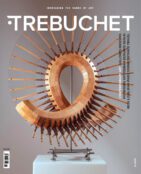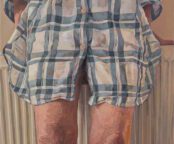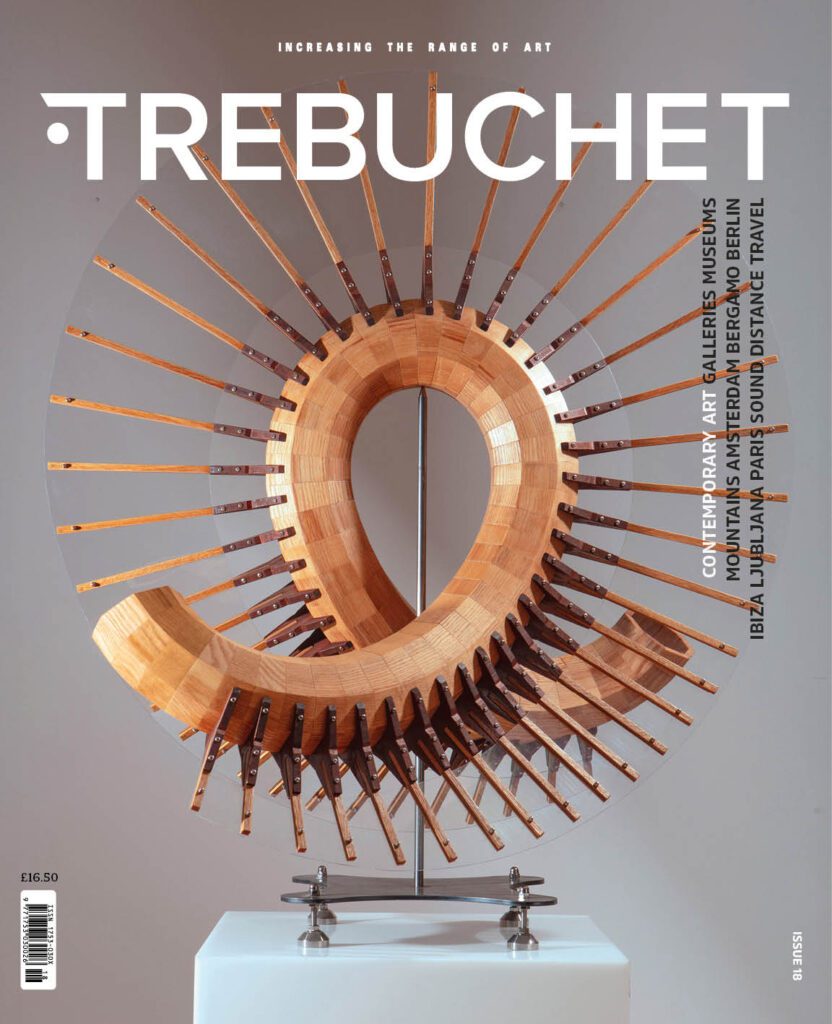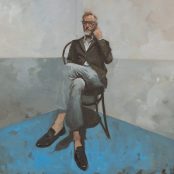Finn Brewster launched Camden Open Air Gallery during the first UK lockdown with the aim of regenerating the local area by commissioning street artists to paint the shop shutters along the high street. Now, the gallery has a permanent space, selling artworks, prints and merchandise.
Here, the 23-year-old founder discusses his accidental entrance into the art world, supporting the street art community and making art more affordable.
Let’s start by talking about your own background. Did you study art?
In the traditional sense no, however, I’ve always been an admirer. My background was in fashion, before COVID I was working for a luxury brand called Barbara Alan and freelancing as a stylist here and there. Clothes were my first creative passion; I’ve always loved how they make you feel, how you can express yourself through them, and so, naturally I thought that was the industry where I’d end up.
I’m not artistic in the traditional sense. Give me a pencil and a piece of paper, and I’m useless. I think where my creativity lies is in the way I think. I tend to shy away from ‘traditional’ ways of doing things.
How and when did you come up with the concept for Camden Open Air Gallery?
It kind of just came to me. I live on the high street, and I’d never seen Camden like that [during lockdown]. With all the people gone, you see a place in a different way, you see stuff that you might not normally see. It was on one of those ‘lockdown walks’ and that’s when it came to me: the shop shutters had been getting battered and I thought why not get some proper pieces up. The shop fronts almost act as a frame for each artwork, really making them pop.
I had a week booked off work at the start of March with the intention of getting three pieces painted. We ended up getting seven pieces done and gaining some attention from the press. Between that and people being able to physically see what we were doing, the project launched itself.
From there the idea naturally evolved and as I started meeting artists who would paint the shutters, I found that many of them don’t get opportunities to have a piece that stays up. There are legal spaces for them to paint, but their work is only up for 2-3 days max.

Was it difficult to get it off the ground?
There were some challenges in the initial stages of trying to convince entrenched street traders to co-operate with a rejuvenation of the high street. Everyone was nervous because they had never seen the street so deserted. I started with the building I live in. Once that was done, people were able to see what we were about.
I think the biggest challenge has been since we opened the doors to the gallery, taking on a space like ours was a challenge – I mean it was a complete wreck, water was leaking through the roof when we got the keys. But we’ve been learning how to run a retail store as well as a gallery, all the processes and systems from health and safety to mounting artworks across a centre line.
What made you decide to open a permanent space?
There was never a plan to open a space, it didn’t even cross my mind that it was a realistic possibility. I’m 23, so I thought it I have to just build it up online. However, the shutters got the attention of our landlord and he offered us the space. Opportunities like that don’t come by very often especially on Camden High Street, so I jumped on it.
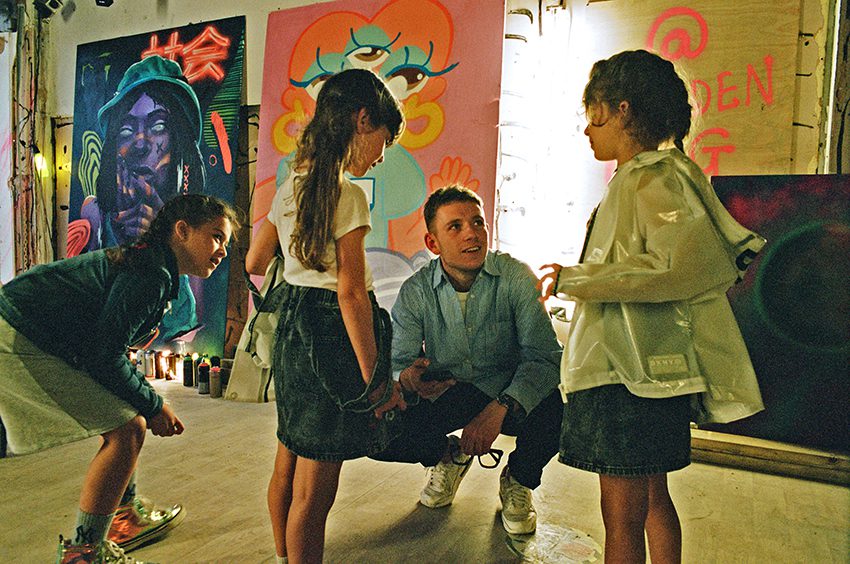
What’s your process for selecting the artists you work with? Are you looking for a particular aesthetic or approach to making art?
I try and let the artwork do the talking. I’m not too fussed about followers, values etc. Obviously, if someone established expresses interest in doing a piece, we jump on it. We are in a unique position, having kind of ‘fallen into it’ for lack of a better phrase, we can offer the space to a range of different artists.
For me personally, though, there are two main factors. Number one is the artist themselves: I tend to go for artists who are really trying to make this their full-time career, people who really want it, people who may not have got the opportunities they deserve.
Second to that, and I think this is more to do with any art that goes up on the streets, is accessibility. Works on the streets are seen by a broad and diverse group of people, especially around Camden. A lot of those people don’t necessarily have a knowledge of art and so [the work] can be misconceived or misunderstood, which ultimately means it doesn’t get the interest or respect it deserves.
With the gallery, however, we can start to play around a bit more. Our current shutters show has a huge educational aspect to it. The process has introduced me to the graffiti community: what they do and why they do it. The scene is so misconceived that I think it needs to be talked about.
And what about the shops and businesses that you partner with. How have they responded to the gallery?
There has been a lot of love from our partners, overwhelmingly. They’ve been supportive and helped me along the way. It’s a testament to Camden I think, from the council to the street traders everyone has welcomed us in and that has been very humbling.
How do you think the gallery fits into or disrupts the wider art scene in London?
I think COAG is trying to do its own thing and maybe we disrupt the scene a little bit by going against the traditional gallery model, but Camden High Street sees people from all walks of life, so we can’t be just one thing – that’s why our offering is so diverse. I see the gallery not only as an exhibition space, but also as a creative hub. We have a painting room in the back, alongside an interview space where we will be running ‘COAG presents’. We’ve just started printing and manufacturing all of our own products and we are opening the space up to other creatives, from digital artists to musicians. I personally want to introduce people to a new way of coming and viewing art – a bit more of an experience rather than a standard exhibition.

What does “accessible art” mean to you?
This is a big topic at COAG, we talk about it all the time. But we keep coming back to the fact that many people just don’t understand it. They don’t have the knowledge of what a certain type of art is. If you asked your average person in the street to define Impressionism, for example, most people wouldn’t be able to answer. I think addressing this by teaching people about art is key to making it accessible without necessarily using the technical language to explain it.
I also think one of the areas where art becomes inaccessible is the price. Affordable art isn’t talked about, it exists and is there for you to see and consume, but when most people hear about the art market and artists, it’s overwhelming because a new piece just fetched so and so million pounds at auction. People can’t relate.
Don’t get me wrong I don’t have a problem with artwork going for that price, people have worked all their life to get to that point. But I think a key area is just having something for everyone. If they come down and see your show, they should be able to take something home with them if they like it. That’s COAG’s aim is to make sure that if people come down, they like what we are doing, they can be a part of it.
How do you see the gallery evolving over the next few years?
It’s too early to really tell where the gallery will evolve to, but the platform is the area where I see us growing. I see COAG becoming a platform or model for other cities other boroughs and high streets. Not only this but for artists as well, I want to make a platform for artists to be given a shot, get their work up and generate an income. That’s the hardest part for many artists, the cost of living is increasing year on year and as such artists are often having to work other jobs that takes them away from being creative. If we can get to a point where all our artists are taking home something, reliably, every month that would be amazing.
Find out more: camdenopenairgallery.com
All images by Sam Rockman

Millie Walton is a London-based art writer and editor. She has contributed a broad range of arts and culture features and interviews to numerous international publications, and collaborated with artists and galleries globally. She also writes fiction and poetry.





